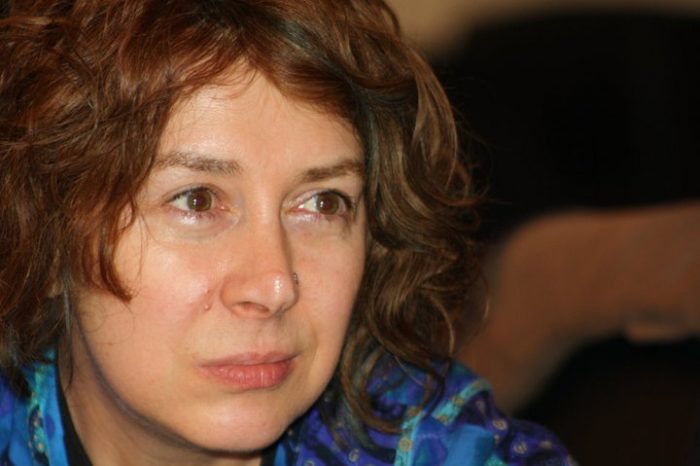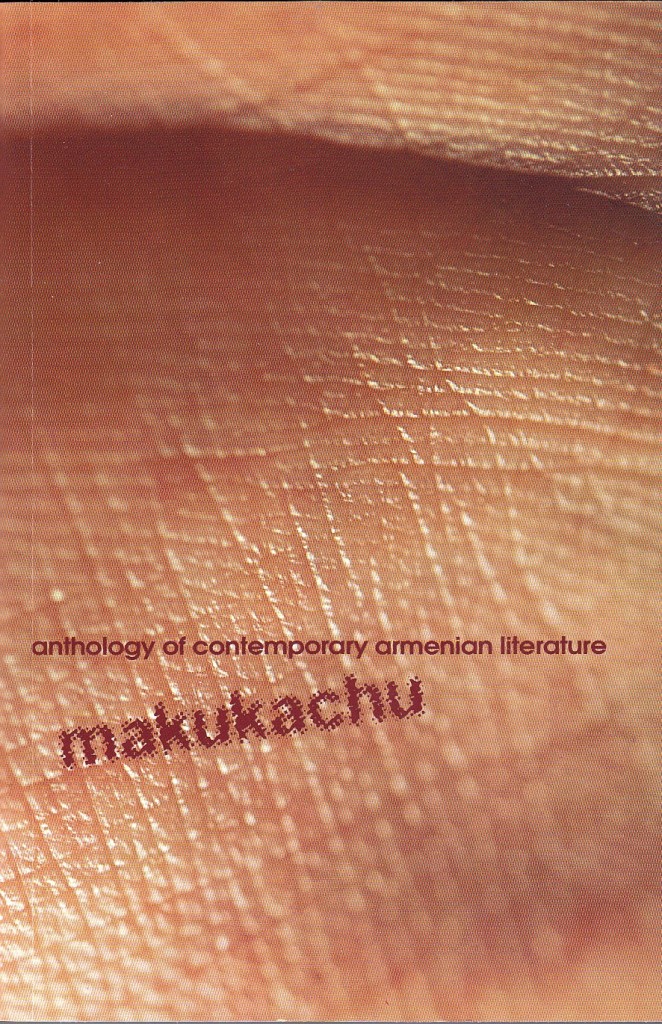Anthology of contemporary Armenian literature “makukachu” and Inknagir Literary Magazine 7 in Armenian published by Inknagir Literary Club are already in bookstores. Their presentation will take place on December 5 at 6 pm in Calumet bar. On this occasion Inknagir is publishing the preface for “makukachu”.
Inknagir’s first volume entitled, Deviation symbolized the journal’s adopted literary policy -to digress from the working totalitarian system and the continuing inertia (or newly emerging) ideological dictations of the Soviet period, and to create a literature separate and free from this concentrated platform. The volume’s prologue, “Manuscripts from Shattered Drawers,” represented the journal’s literary efforts in this regard.
The Soviet no longer was, but literary works were still stored in drawers -those which did not correlate to the censorship of the ruling literary institutions. So the question became to establish a space not only for those works in Soviet and Post-Soviet “drawers,” but also those forbidden to us during the soviet; to accept the different modernist directions from the turn of the century which was alienated and discontinued for us, and to think of a new continuum for the future. And for a “broken” country, for Armenia, to gather the literary works demarcated in her like a “Berlinian” wall, and to re-map the contemporary Armenian literature with the inclusion of the literary works of the Armenian Diaspora.
Inknagir Literary Magazine was established in 2005; the first English anthology was published in 2008.
In eight years, Armenia changed. The centralized platform rifted further, and different literary spaces emerged. Taboos began to diminish, and censorship was overcome in certain circles. But there was one main request remaining at the head of the literary revolution -the liberal was to replace the communist (the spectre, or more accurately the spectre of communism). The new spectre that crossed over to this side of the Berlin wall, the previous spectre that circled Europe, which like communism seemed much more charming on this side, than its birthplace. And those previously “honored” communist acknowledgements were replaced on the one hand with the country’s “President’s Award,” and on the other hand with cries of “bestsellers,” which attracted even contenders of popular literature. So, literature became a hostage to authority and the capitalist market. Under these new circumstances, Inknagir Literary Magazine formulated its literary independence, also adhering to the principle of remaining a separate forum from those of mainstream demands, and to not pay homage to either market populists or elitist tendencies.
However, the collapse of the Berlin wall did not only open up a free market, it opened the potentiality for a meeting place with the other, a conditioning for a redefinition of one’s own identity. Contemporary Armenian literature has a unique potential of self-othering: two literary languages, Western and Eastern Armenian, each of which come with their different political-historical and socio-cultural repositories. However, for that experience it is important to not simply mirror one another, but do so together; to transgress, with one another, to the outside.
“We begin to love our language when it becomes foreign. That alienation either bewitches us or enchants us. Notwithstanding, we do not embrace it anymore,” says Krikor Beledian. In the foreignness of language, however, perhaps there is the desire for an impossible silence or for Babylon, for an intermission, for other/s. Closed off in itself, its only embracing soliloquy is the “silent mirror” -the viewer of which transforms into a self-fascinated mute flower. How to strip the amalgam, so the mirror turns into glass, penetrating the other.
Inknagir’s second volume has already been sorted on open shelves, also breaking the “silent mirror” which replaced the Iron Curtain; the discovery of which -instead of coming from alienation -arises through the seductive charm of self-reflexivity. The collection includes writers from both Armenia and abroad, for whom the dialogue of Eastern or Western Armenian with others multiplied parts of that broken mirror, multiplied the experience of the Other, and the experience of the diaspora because of the possibility of moving to Armenia after its open borders.
As such, Inknagir not only transforms into a writing of its own self, but also through its contents formulates a new identity with the Other.
In her essay “Bulgaria, My Suffering,” Julia Kristeva names emigrant writers like herself as a “monster of the crossroads” -those who must compose in the host language out of necessity but also integrate the creeping qualities of their own mother tongue. Armenian literature has more of a long-standing list than those monstrous crossroads. But it fixates on the return of the mother tongue, and when those heir to multiple languages chose Armenian, they diminish their audience, even more so in their choice of writing in a language without a homeland -Western Armenian -which is considered a dying language. (The Western Armenian writers of this volume are the following authors: Tamar Boyadjian, Christian Batikian, Maroush Yeramian, and Marc Nichanian). Perhaps it is for this reason that sometimes different forms of visual poetry are chosen -so the visual is more apparent first; but fundamentally as a culture who has a holiday designated for translation call T’argmanč‛ac‛ Tōn, they believe in the irreplaceable apostleship of translation.



